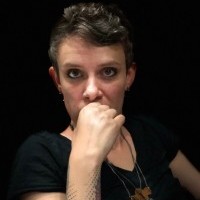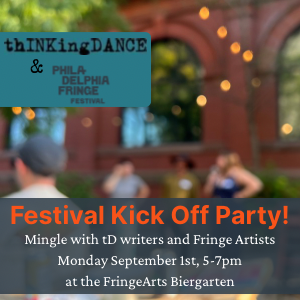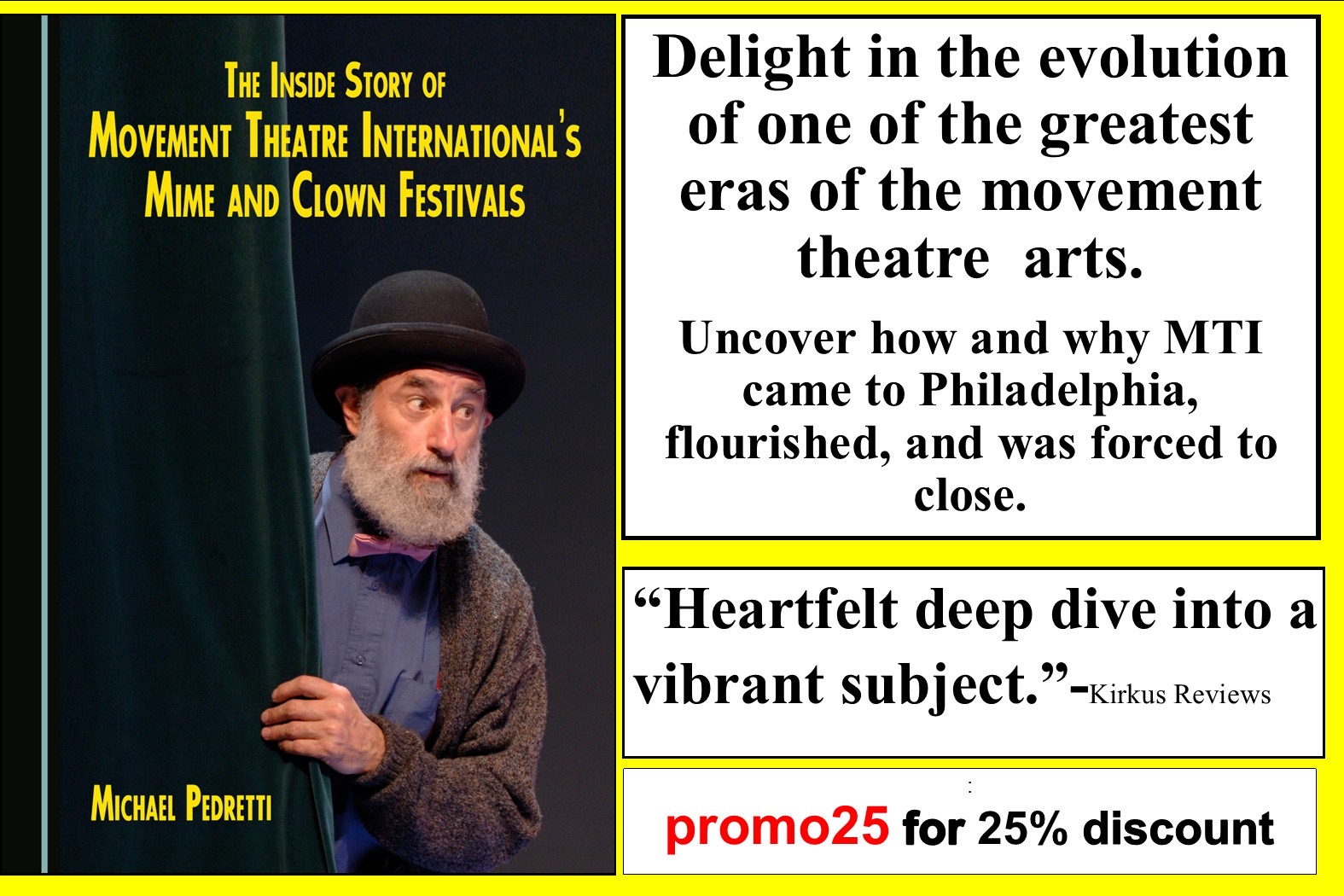
Access and Artistry: Part 2 - a conversation with Dancer and Accessibility Director Peter Trojic
by Emilee Lord
To further unpack the issues facing disabled artists in live performance, I spoke with Peter Trojic, a dancer and the Accessibility Technologies Director at Heidi Latsky Dance.
Emilee Lord: I’ve been investigating accessibility in live performance, in NYC in particular, and ADA compliance of venues and accessibility options for audience experience seems to be moving forward. What I have wondered, and where I find less information, is what the experience is like for performers, dance makers, and technical artists with disabilities and if it is addressed in the same ways. First, tell me about yourself and your role at Heidi Latsky Dance.
Peter Trojic: I'm the Accessibility Director and one of her dancers. I have cerebral palsy (CP). I am in charge of making sure things are accessible to the audience and the company. One of the ways we’ve done this is to build an app for our performances.
EL: What does this app add to the experience?
PT: We had a piece called Displayed, a kind of human living sculpture court. Back then, it used 18 dancers. They stand in spots on stage and do solos as the audience enters through them. There's a change in the music, and the audience knows to go to their seats. Then at the end, the audience is invited to walk back into the space, and our device allows you to hear the dancer's stories as you pass them. I’d best describe it as being like the audio tours at museums. And this app also delivers captioning for the deaf and audio description throughout the piece. Often, this piece was in an untraditional performance space that didn't have access to FM transmitters, which is more typical of audio description. We had to figure out how to deliver it without renting these expensive devices because money is a factor and often a barrier to accessibility.
EL: Yeah, I’ve been wondering about funding and earmarked grant funding allocations around accessibility. Do you find that most places struggle to have the equipment necessary?
PT: So it all depends on the municipality and the resourcefulness of the venue itself. For instance, one time, we updated the app to be able to live stream the audio describer, but then the venue in Jersey City realized that their local government arts office actually had the devices on hand to give out to smaller venues like theirs. As a disabled person, I’ve always had to think outside the box for myself and others. It's an interesting puzzle that I often have to solve. And I have to be wary of the fact that even though I'm disabled, I don't know about all disabilities. So it's my responsibility as someone who's creating and facilitating accessibility that I consult segments of the audience properly.
People don't understand how important this work is and how long it takes. They just expect it to happen. And I've seen organizations try to do it cheaply or quickly, and it doesn't work out. It's not their fault. It's about what resources there are and how they're earmarked.
EL: In Disability Equity In NYC’s Arts and Culture Landscape, by Simi Linton and Kevin Gotkin, one of their calls is to hold the philanthropic community responsible for engaging with that portion of the art world. They propose that it's not just the art that needs to be funded but also how it's delivered.
PT: Right. I really wish accessibility was better funded. There's all this technology, there's all this innovation, there's all this intention, there's all this desire, but are we supposed to volunteer to make our own space?
EL: Right! Who creates the structures or frameworks for accessibility? Are these groups comprised of the people who are meant to be served? Are people with good intentions neglecting to consult the community or be led by it?
PT: I think it’s getting better. While developing our app, we met with another group's accessibility person to show us how their own app worked. They purposely went and worked with disabled folk and blind and deaf users. But I’ve seen it other ways. I have a friend who is blind that was consulted on a project. This project wanted to create an app for their show. They consulted him once and then created this thing, which worked horribly. But because they consulted him once, they could say they consulted a blind person.
And there are stories of disabled performers where the disabled entrance was the garbage entrance and loading dock. There was an actress on Broadway, and instead of making her go through that every day, her cast members carried her up the stairs to the dressing rooms. And look, wow! Disabled people could actually be artists! You have these beautifully accessible theaters now in the front, but at the back, they're not accessible at all.
EL: Tell me about you, the dancer.
PT: I was in college in 2005. I was studying acting and media. And then I realized there were no roles for people with disabilities back then. And so, I took time off and switched to another school, got my degree in urban policy and environmental science, came out of that, and then got kicked off my parent's insurance. (*laughs and sighs) I couldn't do physical therapy, so I started rock climbing. And that's how I met Heidi. I grew up with cerebral palsy. In my early twenties, I had a lot of mentors with disabilities who were older than me. Many of them were actually in Heidi's original integrated piece called Git. So I met her in 2015. At the time I was involved in a summer project for the Americans with Disabilities Act, the 25th anniversary. It snowballed from there. Dance NYC asked me to give a talk on disability in public spaces, and I began my admin role with Heidi Latsky Dance. I had the opportunity to make my own path within the organization. And then, back in 2019, I wanted to grow as a dancer. So I moved to Atlanta and joined a second company called Full Radius Dance. And I have been dancing with them for about four years. So I often travel back and forth.
EL: Do you feel welcome to take whatever dance class you want? Do you audition freely? Do you feel like spaces are open to you? Has the landscape changed since you were in school?
PT: With Full Radius, we have rehearsal consistently three times a week. We take class together. We work very closely together. There was an opportunity to push myself regarding dance style and technique. Having that codified technique within our company allows me to embody movement and digest it in a way that I understand it better.
I do feel comfortable now going into classes and kind of transposing movement onto myself. And also, I feel like I have agency now, as a dancer, where if something is undoable or not something I feel comfortable doing, I'll just say.
EL: You had to build this agency and comfortability over time?
PT: I've been in the industry for eight years, and unfortunately, because there are very few dancers with disabilities in the space, especially wheelchair dancers, I had to learn on the job. But I always say this: I hope that the work I do today as a disabled dancer opens the doors for people like myself, who were disabled in childhood, to take dance class when they are younger in a setting that's actually useful to them. I started dancing when I was 27, and that's great. But I hope that's not the case in 20 years. I hope that it's like, oh, I'm a wheelchair user who's been dancing since I was ten or since I was two.
EL: How do we get there? What helps to decenter ableism in dance?
PT: I think it’s teacher training. I really think that's what it is. Let's encourage people who may have different body types than we do, may have different disabilities than we do, and may have different physicalities. Let's encourage them to dance. There's such a hunger for dance right now and a need for it, and there's enough room for all of us. So let's ensure we recruit people and encourage people in the space to move forward. And this idea of teacher training and ensuring that the next generations of dancers, whatever their physicality, have access earlier might shift some of dance’s gatekeeping overall.
*This interview was held over Zoom on March 23, 2023. It has been edited and condensed for length and clarity.
By Emilee Lord
May 29, 2023










